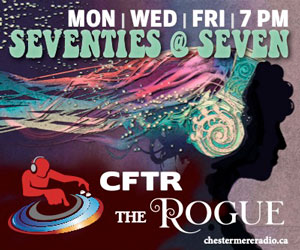The arrival of summer has brought with it the dog days of summer, with extended hours for outdoor drinking. While chugging beer on a sunny patio is a time-honoured tradition in Canada, sometimes you want to class things up a bit with a fancy cocktail.
Cocktails made with sparkling wines get more popular in the summer months, perhaps because they are generally served cooler than a typical glass of wine, and the carbonation makes them extra-refreshing on a hot day.
The Mimosa is perhaps the most famous of the sparkling cocktails, made popular by the Sex & The City girls, and at brunches everywhere. Made from equal parts sparkling wine and chilled fruit juice, the Mimosa is easy to prepare, and refreshing on a hot day.
When entertaining guests, my personal Mimosa recipe is one-half Cipes Brut sparkling wine from the Summerhill Winery in Kelowna, topped up with one-half grapefruit juice. If I’m feeling extra-fancy, I drop in a few frozen blueberries just to give it some pizazz.
For those readers in the audience with a literary bent, you can’t go wrong with Death in the Afternoon, a cocktail invented by Ernest Hemingway, who would slowly trickle iced Champagne over a jigger of Absinthe into a fluted glass. Official records are somewhat sketchy, but an absinthe-fueled bender is assumed to have followed shortly after.
Campari and sparkling wine are another popular combination. Referred to as a Spritz, it is often served as an aperitif with Italian cuisine. The bitter herbal flavour of Campari is best paired with a semi-sweet sparkling wine, preferably a Prosecco just to keep it authentically Italian.
Those who have dined at a fancy beach resort will no doubt be familiar with the Bellini, another Italian-inspired cocktail, made from equal parts Prosecco sparkling wine and frozen peach puree. Your intrepid liquor reporter first sampled this particular cocktail decades ago on a sun-drenched patio overlooking the inner harbour in Victoria BC, and became a lifelong fan.
For those who love Jolly Olde England, Pimm’s #1 served half-and-half with Champagne is the perfect tipple for catching up on Coronation Street or your favourite BBC program.
Whatever your sparkling cocktail of choice, you will generally be adding a spirit or mixer to one of four types of sparkling wines: French Champagne, Spanish Cava, Italian Prosecco, or German Sekt.
The French were the first to perfect sparkling wines in the Champagne region, and are still the gold standard by which all other bubblies are judged. The Spanish mostly follow the French style, with the wines undergoing a secondary fermentation in the bottle. The yeast is frozen into a solid clump and disgorged from the original bottle, with the now-fizzy wine transferred to a fresh bottle for sale.
The Italians and Germans tend to favour the Charmat method, where the wine is fermented and carbonated in a pressure-controlled giant steel vessel, then filtered and directly bottled. This tends to be less expensive than the traditional French method, as it eliminates the time-consuming process of in-bottle secondary fermentation and disgorgement.
Sparkling wines made in the French style tend to have smaller and more persistent bubbles, while the less expensive Italian sparkling wines tend to exhibit more tropical notes.
New World wine producers like Canada or Australia tend to favour the French styles for their highbrow offerings, and the Italian styles for the more mass-market sparkling wines.
Browse the shelves of your friendly neighbourhood booze merchant, and you will see the bubblies tend to split between the under-$20 and over-$30, with not much in the $20-$30 range. This usually lines up fairly closely with the different production methods.
The notable exception seems to be the Spanish winemakers, who make Cava in the traditional Champagne method, but price it more like an Italian Prosecco, making Cava perhaps the best bang for your buck in the world of sparkling wines.
Wine snob that he is, your humble narrator prefers his Champagne to be unadulterated with cocktail mixers, while the more youthful Prosecco makes an excellent base for sparkling cocktails.
Fortunately, sparkling cocktails are very forgiving, so go nuts with whatever happens to be in your liquor cabinet at your next garden party, and you may be pleasantly surprised. Just remember that the bubbles subside quickly, so pour your cocktails when they are ready to be enjoyed, but not so early that the fizz disappears.







